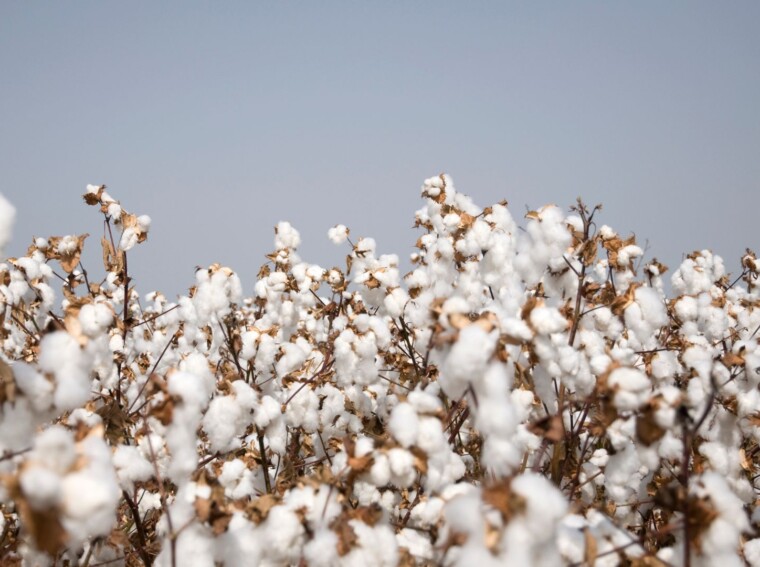The American cotton market, known as the Amerikan Pamuk Borsası in Turkish, is a significant player in the global cotton industry. It serves as a hub for buying and selling cotton produced in the United States, one of the largest cotton producers worldwide. The Amerikan Pamuk Borsası provides a platform for farmers, traders, and textile manufacturers to connect and engage in transactions that shape the supply and demand dynamics of this essential commodity.With its extensive network and infrastructure, the Amerikan Pamuk Borsası plays a crucial role in setting prices and determining market trends for American cotton. Buyers can access various grades of cotton based on their specific requirements, enabling them to meet the diverse needs of their customers. Additionally, sellers benefit from gaining exposure to an extensive customer base both domestically and internationally.The Amerikan Pamuk Borsası operates with transparency and efficiency, ensuring fair trade practices while fostering competition within the market. Its influence extends beyond domestic borders as it contributes significantly to global cotton trade flows.
Amerikan Pamuk Borsası
History of the American Cotton Exchange
 The American Cotton Exchange, also known as “amerikan pamuk borsası” in Turkish, has a rich history dating back to the 19th century. It played a significant role in shaping the global cotton industry and establishing the United States as one of the leading cotton producers and exporters.In the late 1800s, with the rise of industrialization and increased demand for cotton, farmers and traders recognized the need for a centralized marketplace to facilitate transactions. The American Cotton Exchange was established in New York City in 1870 to serve as a hub for cotton trading.During its early years, the exchange faced challenges such as fluctuating prices and market instability caused by factors like weather conditions, political events, and technological advancements. However, it quickly adapted and became a key player in setting standardized quality specifications for different types of cotton.Over time, advancements in communication technology further facilitated trading on the exchange. Today, electronic platforms have replaced traditional open outcry trading pits, making it easier for participants from around the world to engage in buying and selling activities on the Amerikan Pamuk Borsası.
The American Cotton Exchange, also known as “amerikan pamuk borsası” in Turkish, has a rich history dating back to the 19th century. It played a significant role in shaping the global cotton industry and establishing the United States as one of the leading cotton producers and exporters.In the late 1800s, with the rise of industrialization and increased demand for cotton, farmers and traders recognized the need for a centralized marketplace to facilitate transactions. The American Cotton Exchange was established in New York City in 1870 to serve as a hub for cotton trading.During its early years, the exchange faced challenges such as fluctuating prices and market instability caused by factors like weather conditions, political events, and technological advancements. However, it quickly adapted and became a key player in setting standardized quality specifications for different types of cotton.Over time, advancements in communication technology further facilitated trading on the exchange. Today, electronic platforms have replaced traditional open outcry trading pits, making it easier for participants from around the world to engage in buying and selling activities on the Amerikan Pamuk Borsası.
Functions of the American Cotton Exchange
The Amerikan Pamuk Borsası serves several important functions within the cotton industry:
- Price Discovery: One of its primary roles is price discovery – determining fair market values based on supply and demand dynamics. Market participants can access real-time price information on various grades of cotton through electronic trading platforms offered by major exchanges.
- Risk Management: The exchange provides risk management tools such as futures contracts that allow buyers and sellers to hedge against potential price fluctuations. This helps mitigate risks associated with unpredictable factors like crop yields or changes in global trade policies.
- Market Transparency: By providing an organized marketplace with clear rules and regulations, it promotes transparency within the industry. Participants can access historical data, market reports, and other relevant information, enabling them to make informed decisions.
- Standardization: The Amerikan Pamuk Borsası plays a crucial role in setting quality standards for cotton. By establishing grading systems based on factors like fiber length, strength, and color, it ensures consistent quality across different batches of cotton.
- Global Trade Facilitation: As one of the world’s largest cotton exchanges, the American Cotton Exchange facilitates international trade by providing a platform for buyers and sellers from various countries to connect and transact efficiently.
Factors Affecting the American Cotton Market
Weather Conditions and Crop Yields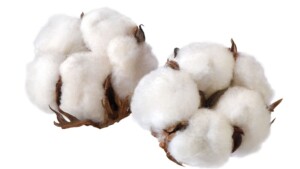
One of the key factors influencing the American cotton market is weather conditions. The success or failure of the cotton crop heavily depends on factors such as rainfall, temperature, and sunshine. Adverse weather events like droughts, excessive rains, or extreme temperatures can significantly impact crop yields and quality.For instance, if there is a prolonged period of drought in major cotton-growing regions like Texas or California, it can lead to reduced irrigation availability and negatively affect crop yields. On the other hand, excessive rainfall may result in waterlogged fields that hinder proper growth and increase the risk of disease outbreaks.The variability of weather patterns makes predicting cotton production challenging. Farmers need to constantly monitor weather forecasts to make informed decisions regarding planting schedules, irrigation management, and pest control measures.
Global Demand and Supply of Cotton
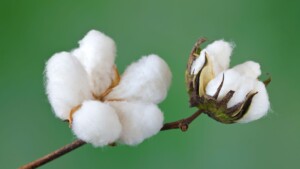 Another crucial factor shaping the American cotton market is global demand and supply dynamics. As one of the largest exporters of cotton worldwide, changes in demand from major importing countries greatly impact prices. Demand for cotton textiles fluctuates depending on various factors like fashion trends, consumer preferences, economic conditions in importing nations, and government policies promoting domestic textile industries. For example, increased global demand for sustainable and organic textiles has led to a surge in demand for organic cotton produced in America. On the supply side, competition among exporting countries plays a significant role. The United States competes with other major producers like India, China, Brazil, Pakistan, and Australia. Fluctuations in their production levels due to weather events (such as monsoons impacting Indian cotton) or policy changes can influence market dynamics by affecting overall global supply. Trade tensions between nations may also disrupt trade flows through tariffs or trade restrictions. Changes in import tariffs imposed by countries on American cotton products have an immediate impact on pricing competitiveness within international markets.
Another crucial factor shaping the American cotton market is global demand and supply dynamics. As one of the largest exporters of cotton worldwide, changes in demand from major importing countries greatly impact prices. Demand for cotton textiles fluctuates depending on various factors like fashion trends, consumer preferences, economic conditions in importing nations, and government policies promoting domestic textile industries. For example, increased global demand for sustainable and organic textiles has led to a surge in demand for organic cotton produced in America. On the supply side, competition among exporting countries plays a significant role. The United States competes with other major producers like India, China, Brazil, Pakistan, and Australia. Fluctuations in their production levels due to weather events (such as monsoons impacting Indian cotton) or policy changes can influence market dynamics by affecting overall global supply. Trade tensions between nations may also disrupt trade flows through tariffs or trade restrictions. Changes in import tariffs imposed by countries on American cotton products have an immediate impact on pricing competitiveness within international markets.
Trade Policies and Tariffs
Trade policies and tariffs can have a profound effect on the American cotton market. Governments often implement trade measures to protect domestic industries, promote self-sufficiency, or address geopolitical concerns. For instance, when countries impose high import tariffs on American cotton, it becomes more expensive for foreign buyers to purchase American cotton products. This can reduce demand and subsequently impact prices in the domestic market. Additionally, trade agreements between nations can shape market conditions. The negotiation and implementation of free trade agreements (FTAs) may lead to increased access to international markets for American cotton exporters or create new opportunities through tariff reductions. It is important for stakeholders in the American cotton industry to closely monitor and adapt to changing trade policies and tariffs as they directly influence the competitiveness of their products in global markets. In summary, factors such as weather conditions, global demand and supply dynamics, as well as trade policies and tariffs play significant roles in shaping the American cotton market. Farmers, traders, and policymakers need to navigate these factors effectively to ensure a sustainable and thriving industry that meets both domestic needs and international demands.
Impact of the American Cotton Exchange on the Economy
Job Creation and Employment Opportunities
The American Cotton Exchange, also known as amerikan pamuk borsası, plays a crucial role in driving job creation and employment opportunities within the economy. The exchange serves as a hub for cotton producers, buyers, and traders, creating a vibrant marketplace that supports various stages of cotton production and distribution. By facilitating transactions between sellers and buyers, the American Cotton Exchange stimulates demand for labor across different sectors. From farmers growing cotton to workers involved in ginning, spinning, weaving, and textile manufacturing, numerous jobs are directly linked to the exchange. Additionally, ancillary industries such as logistics, transportation, packaging, and marketing also benefit from this bustling trade.As an example of its impact on job creation, let’s consider the state of Texas in the United States. Texas is one of the largest cotton-producing regions globally. The presence of the American Cotton Exchange not only provides employment opportunities for thousands of individuals involved in cotton cultivation but also supports related industries like equipment manufacturing and agricultural research.
Revenue Generation and Export Earnings
The activities facilitated by the American Cotton Exchange significantly contribute to revenue generation and export earnings for economies heavily reliant on cotton production. The exchange acts as a catalyst for international trade by connecting domestic producers with global buyers. Through efficient trading mechanisms offered by the exchange platform, sellers can secure competitive prices for their cotton crops while ensuring timely payments. This enables them to generate substantial income that contributes to economic growth at both regional and national levels. Moreover, by fostering a transparent marketplace with standardized quality control measures, the American Cotton Exchange builds trust among international buyers. This leads to increased export volumes as overseas customers value reliable sourcing channels provided by reputable exchanges like amerikan pamuk borsası.For instance, countries like India rely on exporting significant quantities of cotton fibers each year. By participating in exchanges like Amerikan Pamuk Borsası, Indian cotton producers can access a wider customer base and secure better prices for their products. This, in turn, boosts the country’s revenue from cotton exports and strengthens its position in the global market.
Influence on Other Industries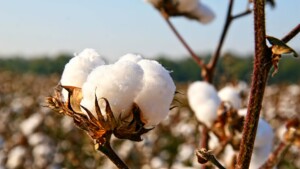
The American Cotton Exchange’s influence extends beyond the agriculture sector, impacting various other industries within the economy. As one of the primary raw materials for textile manufacturing, cotton has a direct impact on the apparel and fashion industry. By providing a reliable marketplace for cotton trading, the exchange ensures a consistent supply of high-quality fibers to textile manufacturers. This stability allows clothing companies to plan their production cycles effectively and meet consumer demands efficiently. The availability of quality cotton also enables manufacturers to create garments with desirable attributes such as softness, breathability, and durability. Moreover, by supporting sustainable farming practices through initiatives like organic or fair-trade certifications, the American Cotton Exchange promotes environmentally conscious choices within the industry.
Challenges and Risks in the American Cotton Market
Price Volatility and Market Fluctuations
The American cotton market faces significant challenges and risks, with price volatility being a major concern. Fluctuations in cotton prices can occur due to various factors such as changes in supply and demand, weather conditions, trade policies, and global economic trends. These fluctuations can have a profound impact on both cotton growers and buyers. For instance, if there is an oversupply of cotton in the market, prices may drop significantly, causing financial strain for farmers who rely on cotton as their primary crop. On the other hand, sudden increases in demand or disruptions in supply can lead to price spikes that affect textile manufacturers and retailers who heavily depend on a stable pricing structure. To illustrate the extent of this challenge, let’s consider an example. In recent years, changes in Chinese import policies have caused fluctuations in the global cotton market. When China reduced its imports of raw cotton from abroad, it led to a surplus of cotton fiber worldwide. As a result, prices dropped sharply by nearly 30% between 2014 and 2015 (source: USDA).
Competition from Alternative Fibers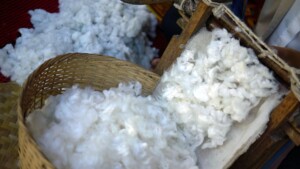
Another significant challenge faced by the American cotton market is competition from alternative fibers such as synthetic materials or sustainable natural fibers like hemp or bamboo. While traditional cotton remains popular globally due to its comfort and versatility, these alternatives are gaining traction due to their perceived eco-friendliness or enhanced performance characteristics. Synthetic fibers like polyester dominate certain segments of the textile industry due to their lower cost and wrinkle-resistant properties. Additionally, sustainable natural fibers are increasingly favored by eco-conscious consumers looking for environmentally friendly options. This competition poses risks for American cotton producers who must navigate changing consumer preferences while ensuring their products remain competitive in terms of quality, cost-efficiency, sustainability practices throughout the supply chain.
Environmental Concerns and Sustainability
Environmental concerns surrounding conventional cotton production are also a significant challenge in the American cotton market. Cotton cultivation requires extensive use of water, pesticides, and fertilizers, which can have adverse effects on ecosystems and human health. To address these concerns, there is an increasing demand for sustainable cotton production practices such as organic farming methods or the use of genetically modified crops that require fewer chemical inputs. However, transitioning to sustainable practices often comes with additional costs and complexities for farmers. Moreover, consumers are becoming more conscious about the environmental impact of their purchasing decisions. This shift in consumer behavior places pressure on textile companies to source cotton from sustainable and transparent supply chains. Failure to meet these expectations can result in reputational damage and reduced market share.

